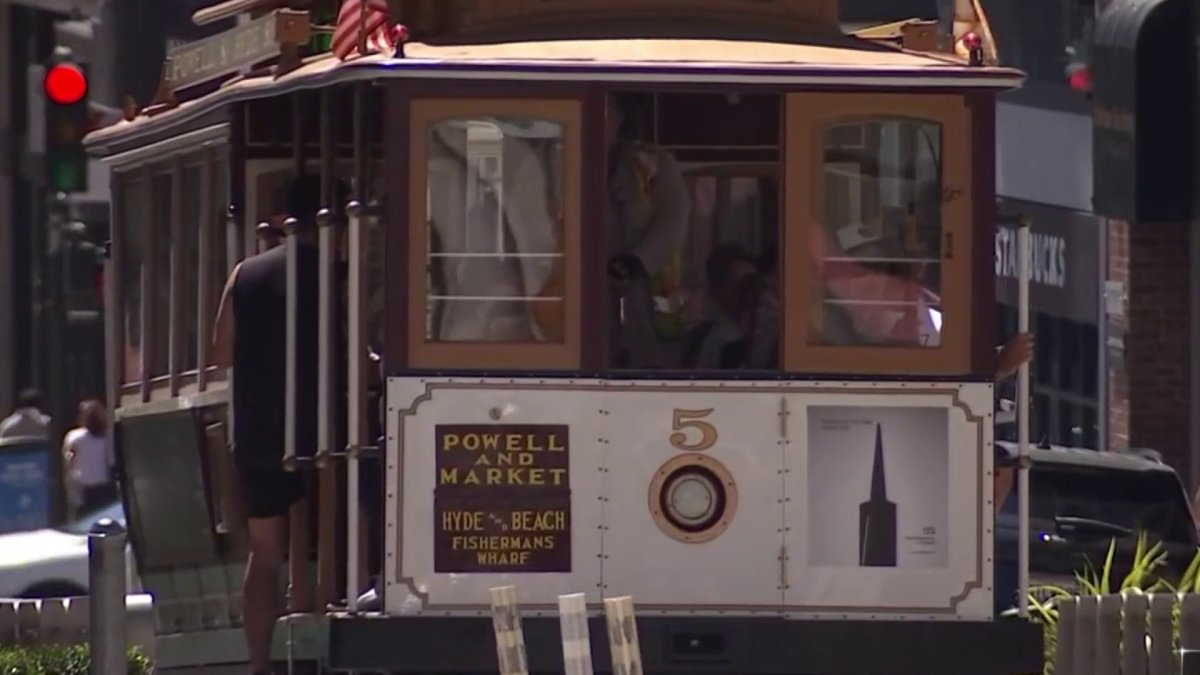## Level Up, San Fran: Will AI Be the Key to Rebuilding the City’s Business District? San Francisco’s downtown, once a bustling hive of activity, has been struggling to regain its former glory. Empty storefronts and dwindling foot traffic paint a grim picture, leaving many to wonder if the city’s iconic business district will ever truly bounce back. But what if the answer lies not in brick and mortar, but in the rapidly evolving world of artificial intelligence? NBC Bay Area is reporting that AI could be the game-changer San Francisco needs, promising to revitalize the area and usher in a new era of innovation. We delve into the analysis, exploring the potential of AI to breathe new life into the city’s struggling heart. Will this tech-powered solution be the winning strategy? Prepare to explore the fascinating possibilities – and potentially game-changing implications – of AI for the future of San Francisco.
Analyzing the Use of AI in Urban Planning
Predicting Trends and Optimizing Resource Allocation

Artificial intelligence (AI) is rapidly transforming urban planning, offering powerful tools to analyze complex data and make informed decisions. By leveraging machine learning algorithms, cities can predict population growth, traffic patterns, and resource usage, allowing for proactive planning and resource allocation. For example, AI-powered systems can analyze historical data on pedestrian and vehicle traffic to identify congestion hotspots and optimize traffic flow. Similarly, AI can analyze energy consumption patterns to identify areas for efficiency improvements and reduce environmental impact.
In the context of San Francisco’s Union Square, AI could play a crucial role in addressing challenges such as foot traffic decline and retail vacancies. By analyzing data on consumer behavior, demographics, and local events, AI algorithms can identify factors contributing to the decline and suggest strategies to revitalize the area. This could include optimizing marketing campaigns, promoting targeted events, and identifying opportunities for new businesses and services.

Improving Urban Infrastructure
AI is also being used to improve the efficiency and sustainability of urban infrastructure. Smart sensors can collect real-time data on air quality, noise levels, and infrastructure performance. This data can be analyzed by AI algorithms to identify areas requiring maintenance or upgrades, optimize resource allocation, and improve the overall quality of life for residents.

Ethical Considerations
While AI offers numerous benefits for urban planning, it is essential to address the ethical considerations associated with its use. Data privacy, algorithmic bias, and transparency are key concerns that need to be carefully considered. It is crucial to ensure that AI algorithms are trained on diverse and representative datasets to avoid perpetuating existing inequalities. Additionally, the decision-making processes of AI systems should be transparent and accountable to the public.
AI-Powered Solutions for San Francisco Businesses
Enhancing Customer Experience
San Francisco businesses are increasingly adopting AI-powered solutions to enhance customer experience and drive growth. Chatbots, for example, can provide instant customer support, answer frequently asked questions, and personalize interactions. AI-powered recommendation engines can suggest products or services tailored to individual customer preferences, leading to increased sales and customer satisfaction.
Streamlining Operations
AI can also streamline business operations, improving efficiency and reducing costs. AI-powered automation can handle repetitive tasks, such as data entry and scheduling, freeing up employees to focus on more strategic initiatives. Predictive analytics can forecast demand, optimize inventory management, and reduce waste.
Generating Insights
AI-powered analytics platforms can provide businesses with valuable insights into customer behavior, market trends, and operational performance. By analyzing large datasets, AI algorithms can identify patterns and correlations that would be difficult or time-consuming for humans to detect. These insights can inform business decisions, improve marketing campaigns, and drive innovation.
Case Studies
Numerous San Francisco businesses have successfully implemented AI-powered solutions. For example, a local restaurant chain uses AI-powered chatbots to handle online orders and provide customer support, while a retail store utilizes AI-powered recommendation engines to personalize product suggestions and increase sales. These case studies demonstrate the transformative potential of AI for businesses in San Francisco.
Fostering Economic Growth and Innovation
The widespread adoption of AI is expected to drive economic growth and innovation in San Francisco. By automating tasks, improving efficiency, and generating new insights, AI can create new business opportunities, attract investment, and enhance the city’s competitive advantage.
The Nintendo Effect
Revitalizing Union Square
The impending arrival of a new Nintendo store in Union Square is generating excitement and optimism about the area’s revitalization. Nintendo stores are known for their immersive experiences and strong brand appeal, which could attract a new wave of visitors to the neighborhood.
Attracting Visitors and Boosting Foot Traffic
Gamestanza anticipates that the Nintendo store will draw in significant foot traffic, particularly from families and young adults. The store’s interactive displays, gaming tournaments, and exclusive merchandise will likely create a vibrant and engaging atmosphere, encouraging visitors to explore the surrounding area. This influx of visitors could benefit nearby businesses, revitalizing the retail scene and boosting the overall economic activity in Union Square.
Gaming as a Driver of Tourism and Economic Development
The gaming industry has become a major force in global tourism and economic development. Gaming conventions, esports events, and dedicated gaming destinations attract millions of visitors worldwide, generating billions of dollars in revenue. The opening of a Nintendo store in San Francisco aligns with this trend, highlighting the potential for gaming to drive tourism and revitalize urban areas.
Conclusion
So, could AI be the key to revitalizing San Francisco’s struggling business district? NBC Bay Area’s analysis suggests it has the potential. By streamlining operations, personalizing customer experiences, and even predicting trends, AI could help businesses in the city’s core thrive in the face of ongoing challenges. But this isn’t just about robots taking over; it’s about empowering businesses with intelligent tools to adapt and grow. The implications are far-reaching. Imagine a city where AI-powered systems guide you to the best deals, optimize traffic flow, and even predict the next big retail trend. This could lead to a more vibrant, efficient, and ultimately, more enjoyable experience for both residents and visitors. However, this future isn’t guaranteed. Successfully implementing AI will require careful planning, investment, and a commitment to ethical development. The city’s leaders, businesses, and citizens all have a role to play in shaping this technological evolution and ensuring its benefits are shared by all. The question is, will San Francisco embrace the AI revolution and write its own future, or will it fall behind in the race for a smarter, more connected tomorrow?
